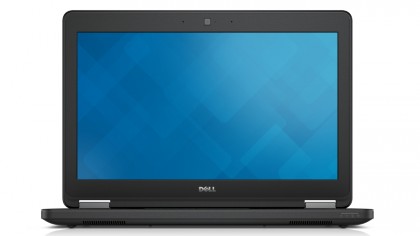Why you can trust TechRadar
Benchmarks
- PCMark 8 Home: 2613
- PCMark 8 Home battery life balanced 50% screen: 2 hours 6 minutes
- PCMark 8 Home battery life power saver 25% screen: 2 hours 14 minutes
- PCMark 8 Home battery life high performance 100% screen: 2 hours 4 minutes
- PCMark 8 Work battery life balanced 50% screen: 2 hours 23 minutes
- 3DMark: Cloud Gate: 3740; Sky Diver: 2382; Fire Strike: 528
- Cinebench R11.5: CPU: 2.41; Graphics: 16.18fps
- Cinebench R15: CPU: 210cb; Graphics: 20.47fps
The Dell doesn't have bad hardware inside, but it's unable to compete with its rivals in most tests – the Lenovo ThinkPad Yoga 12 and Dell XPS 13 both have Core i5 processors, twice as much memory and SSD storage.

In CineBench's processor test the Dell scores 210 points, which was behind rivals – the Lenovo topped out at 263 points, and the Dell XPS managed 258 points. The Latitude fought back with a score of 2,613 in PCMark 8's Home test, which was ahead of both rivals – but not by much.
The Latitude fell behind in gaming tests, despite all three machines mentioned having the same Intel Graphics HD 5500 core. The Dell could only manage a score of 528 points in the 3DMark Fire Strike test – but both rivals rose beyond 700 points in the same test.
The Core i3 chip doesn't match its rivals in most benchmarks, then, which makes those machines more suitable for tougher work tasks. However, if you need a laptop for general purpose work and web browsing, the Latitude has ample power.

The Latitude lagged behind its rivals in battery life, too. In PCMark 8's Home test with the screen at 50% brightness the Dell lasted for two hours and twenty-three minutes – around an hour behind the Lenovo, and two hours behind the Dell XPS. If you need a notebook that'll last all day, look elsewhere.
Screen
The Dell's matte finish is good, but its resolution of 1,366 x 768 hampers serious work efforts – and falls behind its rivals, which have 1080p or 3,200 x 1,800 touchscreens. That's not the Dell's only problem.

The measured brightness level of 166cd/m2 is just about good enough for day-to-day use, but the black level of 0.63cd/m2 is much worse, and results in a poor contrast ratio of 263:1. Those results impact on usage – the poor black level means dark shades appear grey and insipid, and the poor contrast means that colours lack punch and vivacity throughout.
Sign up to the TechRadar Pro newsletter to get all the top news, opinion, features and guidance your business needs to succeed!
Those dull colours aren't accurate, either. The measured colour temperature of 7,169K is on the cool side of the 6,500K ideal figure, and the screen's average Delta E of 9.84 is miles short of a good result.
The Dell's screen is low resolution and lacks quality, which means it's only suitable for low-end work tasks – anything that demands more screen space or colour accuracy will flounder.
Mike has worked as a technology journalist for more than a decade and has written for most of the UK’s big technology titles alongside numerous global outlets. He loves PCs, laptops and any new hardware, and covers everything from the latest business trends to high-end gaming gear.
